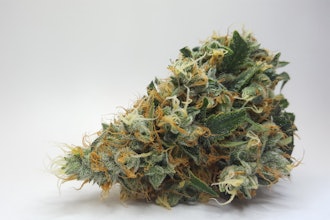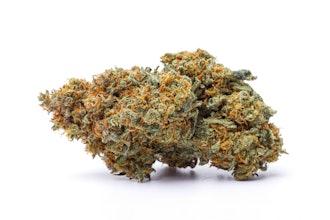
By the end of 2026, as much as $3 billion in debt is set to mature for major U.S. cannabis operators. Without access to traditional financing, many cannabis-related businesses (CRBs) have relied significantly on third-party debt financing.
As these loans mature, CRBs can refinance their debt while also restructuring operations. The situation presents a unique opportunity for financial institutions (FIs) to enter this underserved market and support their local economies.
How did we get here?
The industry's early reliance on equity-based investments or high-interest debt financing has led to this debt crisis. In the earlier days of cannabis, investors claimed significant equity stakes in cannabis businesses, often leading to overvalued acquisitions and financial instability. While many operators turned to debt financing to raise non-dilutive capital, debt rates were already steep compared to market rates.
The debt crisis is exacerbated by compounding debt. Operators initially secured loans for essential expenses like equipment, inventory, and startup costs. However, many took on additional hard-money loans or side financing agreements to cover existing debt, creating a vicious cycle of mounting payments.
Watch: The Cannabis Industry Will Need Up to $160 Billion in Additional Capital
The fact of the matter is many cannabis businesses underestimated the long-term consequences of accumulating debt without a comprehensive cash flow strategy for their companies. And let's not forget the role misinformation has played in these miscalculations.
Many operators structured their businesses believing that tax relief would be retroactive or that rescheduling or SAFE Banking would be their saving grace. However, it's no shock that cannabis policy moves slowly (as history proves) and rarely aligns with the industry's expectations (or hopes).
With regulatory uncertainty persisting, businesses must operate within today's financial realities—not tomorrow's possibilities. This brings us to a financial reckoning—one that signals both a challenge and an opportunity for financial institutions willing to step in with sustainable, strategic banking solutions.
What will be the broader economic implications if major operators default on their loans?
If cannabis operators default on their loans, the effects will trickle throughout the cannabis industry, affecting equipment brands, growers, manufacturers, lighting and irrigation suppliers, ancillary service providers, and even technology firms that have extended credit to struggling businesses.
A dispensary or manufacturer shutting down isn't an isolated event; it leaves a trail of unpaid invoices, disrupting cash flow for suppliers and service providers who depend on those payments to stay afloat.
The true scope of this crisis extends beyond the estimated $3 billion in cannabis industry debt—it's likely closer to a $4.5 billion problem once cash flow/supply chain dependencies are factored in.
What makes this debt challenge a unique opportunity for financial institutions (FIs) to enter the cannabis market?
Today, cannabis businesses have greater access to banking services. But the key to refinancing CRB debt while maintaining compliance is understanding the sources and uses of funds at a granular level. Simply holding a cannabis license isn't enough—FIs must monitor where the money comes from and how it's being used, just as they would in any other high-risk industry.
Think of it like a bank with security cameras—you still lock the doors after hours. Similarly, compliance and visibility measures must be in place before problems arise, not after.
Robust data analytics can prove companies are only handling money legally and help FIs to better assess a company's risk. For instance, CTrust has developed a credit scoring system tailored to cannabis businesses. Their industry-wide data enables FIs to assess stability and revenue run rates more accurately. The increased financial visibility makes it easier to distinguish strong operators—who may have debt but are viable candidates for restructuring—from those with no realistic path to recovery.
This growing level of transparency is why more banks, financial institutions, and third-party lenders are taking a closer look at cannabis, especially in light of the industry's mounting debt challenges.
Coupled with reports from Whitney Economics, which project $54 billion to $160 billion in industry growth over the next five to eight years, the opportunity is clear. When lenders realize they can offer premium rates while monitoring cannabis businesses more effectively, their interest piques. Banks make money by lending, not just holding deposits—cannabis presents a compelling, data-backed opportunity.
How will cannabis banking evolve as this $3 billion debt matures?
The pendulum—the mood of banking—swings wildly. But the banks' actions don't; they stay right in the middle. For instance, if a bank's mood is weary and its predisposition believes investing in cannabis is too high risk, this bank will stay on the sideline until the plant is federally legal.
Those who see the opportunity and potential success will enter the cannabis industry more and more. Larger community and regional banks are now entertaining the space, which is exciting. Yet, the community banks and credit unions still have the biggest opportunity to capitalize on the current $3B and future $50B+ debt opportunity. They're local, can move fast, and if they keep opening their minds, they can open doors to new opportunities.
Final takeaways
The most important step for a cannabis operator facing impending debt is to not put off exploratory action—you have options. If you know your debt's coming through and you have a balloon payment, do not wait until the end.
Get ahead of it—if you're not planning at least 90 days out, you're setting yourself up for higher costs and fewer options. Otherwise, lenders will see your urgency and use it to their advantage, adding fees or demanding equity.
Bottom line: don't despair, and don't throw in the towel. There is a light at the end of the tunnel.























